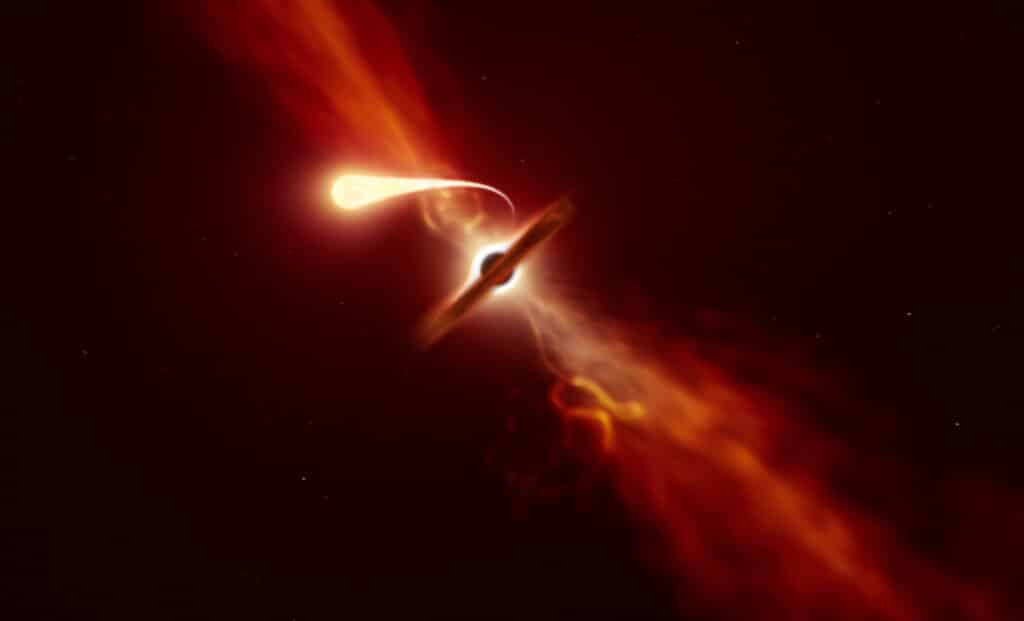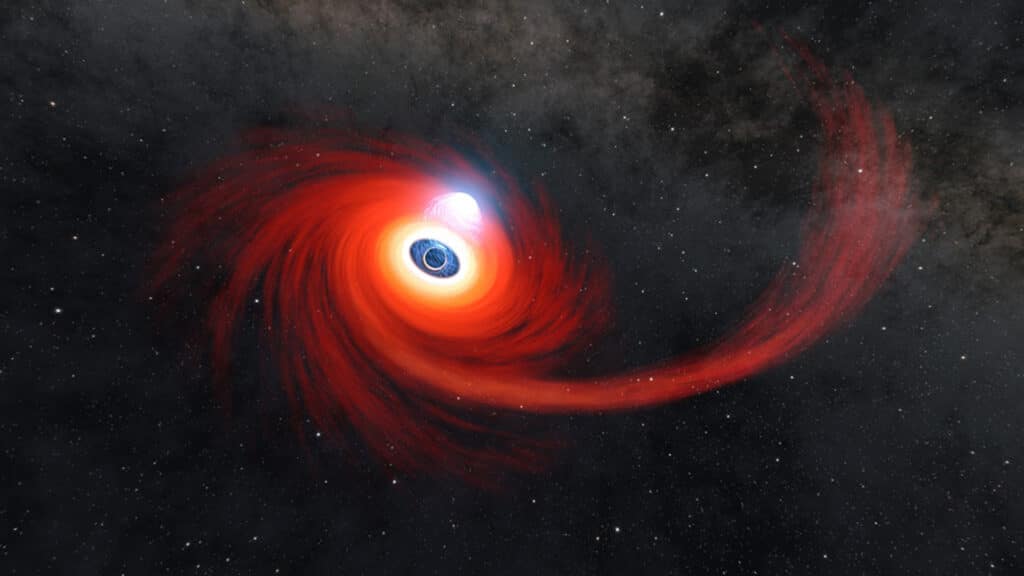Good morning, universe! A team of astronomers have discovered a black hole that’s suddenly started to “shine” in a way that’s catching experts by surprise. Researchers report that their finding reveals one of the most “dramatic ‘switches on’ of a black hole ever seen.”
The black hole in question is known as J221951, described as one of the most “luminous transients” ever recorded. In simpler terms, it’s a cosmic object that changes its brightness dramatically over a short period.
This black hole was initially discovered in September 2019 by University of Birmingham astronomer Dr. Samantha Oates and her team while they were hunting for signs of kilonovas. These are spectacular light events that happen when neutron stars merge.
However, what they found wasn’t a kilonova, but something even more unusual: J221951. Unlike kilonovas, which appear blue and then fade into red, this transient remained consistently blue and didn’t fade quickly.
The research used various telescopes, including NASA’s Swift/UVOT and the Hubble Space Telescope, to determine that J221951 is around 10 billion light-years away. Its incredible brightness at such a vast distance makes it one of the most luminous transients in history.

What Made the Black Hole ‘Switch On’?
Evidence suggests that J221951 suddenly became luminous because a supermassive black hole at its center started to feed on surrounding material very quickly. A black hole “feeding” refers to the process of pulling in nearby matter, like gas and stars, into its gravitational pull.
Before the discovery, the area where J221951 is located showed signs of a red galaxy, and the sudden change in brightness suggests that a dormant (inactive) black hole at the center of this galaxy started feeding and became active.
The team proposes two potential scenarios for this dramatic event. First, a star could have come too close to the supermassive black hole and got torn apart, a phenomenon known as a “tidal disruption event.” Alternatively, the black hole could have transitioned from a dormant state to an active one, a process known as an “active galactic nucleus ‘changing state.'”
“J221951 is one of the most extreme examples yet of a black hole taking us by surprise,” says Dr. Matt Nicholl from Queen’s University Belfast, in a statement. “Continued monitoring of J221951 to work out the total energy release might allow us to work out whether this is a tidal disruption of a star by a fast-spinning black hole, or a new kind of AGN switch on.”
Importance of the Discovery
This discovery has broad implications for our understanding of black holes and could offer key insights into what exactly causes black holes to suddenly become active. “We will need to continue to monitor J221951 over the next few months to years to capture its late-time behavior,” adds Oates, highlighting the importance of long-term observations.
Overall, this unexpected discovery broadens our understanding of the universe and keeps astronomers on their toes, eager to find out what else might be out there.
The research is published in the Monthly Notices of the Royal Astronomical Society. In addition to the University of Birmingham, scientists involved in the study hail from the University College London, and Queen’s University Belfast.












